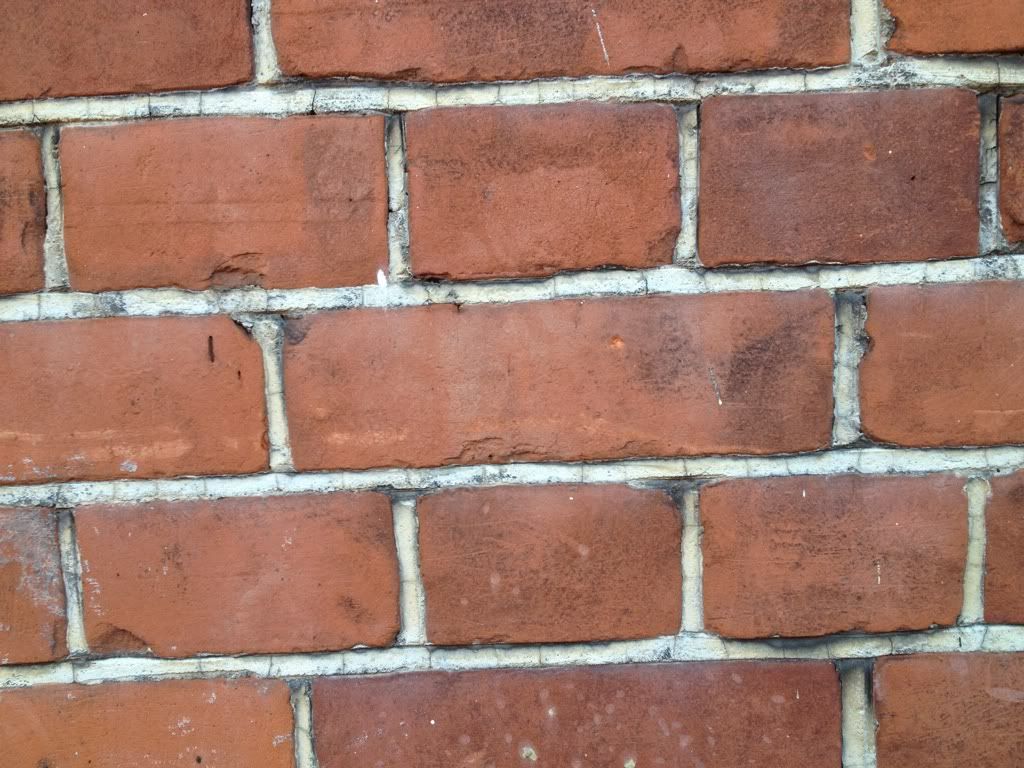Page 1 of 1
Posted: Tue Mar 06, 2012 11:51 pm
by Thepinkpavingco
I know this a paving site but you guys may be able to help me find a name for these bricks we need a really close match as it is on a really old building 
Thanks in advance
Dan
Posted: Tue Mar 06, 2012 11:52 pm
by Thepinkpavingco
Posted: Wed Mar 07, 2012 5:32 am
by Dave_L
They're really old imperial bricks.
Posted: Wed Mar 07, 2012 7:05 am
by cookiewales
Which part of the country are they
Posted: Wed Mar 07, 2012 7:21 am
by lutonlagerlout
something like these
but most merchants stock red rubber type bricks
looks like lime mortar weather struck too
LLL
Posted: Wed Mar 07, 2012 11:13 am
by Brucieboy
From the original close-up photo, it looks more like cement-based re-pointing has been carried out at some time in the past due to the many fine cracks in the bed joints. It does look very light in colour - possibly done with either white cement, Portland cement with hydrated lime, a very light coloured sand or even overpainted? At worst case it could be efflorescence. I could be wrong but if you've got to match it, chip a bit off to check and see if the original mortar is revealed underneath (quite probably traditional lime-based).
Posted: Wed Mar 07, 2012 11:16 am
by DNgroundworks
Dave_L wrote:They're really old imperial bricks.
Lol Dave.
maybe try scouting round your local reclamation yards?
Posted: Wed Mar 07, 2012 7:20 pm
by Dave_L
DNgroundworks wrote:Dave_L wrote:They're really old imperial bricks.
Lol Dave.
No No I was wrong, they are metric bricks dating from around 1920 I think.
Posted: Wed Mar 07, 2012 7:57 pm
by lutonlagerlout
sorry brucie i got ya this time
almost certainly the main mortar is 16 sand 1 cement and 1 lime
but that pointing is original
the old brickies i worked with as a lad said they used to build in a super weak mix then go around after pointing
i would bet my eye teeth that that pointing is original inter war pointing
sorry eye tooth,waiting for implant :;):
LLL
Posted: Wed Mar 07, 2012 9:04 pm
by DNgroundworks
Dave_L wrote:DNgroundworks wrote:Dave_L wrote:They're really old imperial bricks.
Lol Dave.
No No I was wrong, they are metric bricks dating from around 1920 I think.
Dave i wasnt being an arse, it cracked me up!
Posted: Wed Mar 07, 2012 10:04 pm
by Dave_L
DNgroundworks wrote:Dave_L wrote:DNgroundworks wrote:
Lol Dave.
No No I was wrong, they are metric bricks dating from around 1920 I think.
Dave i wasnt being an arse, it cracked me up!
LOL I'm glad it did as I intended as I haven't got a f'in clue as to what I'm on about when it comes to bricks!!!!!!
Posted: Wed Mar 07, 2012 10:07 pm
by Brucieboy
LLL – when you mentioned lime in your first post I thought you was referring to a traditional lime sand mortar (with no cement) hence my comment. I haven’t seen a lime mortar crack to the extent shown in the photo so presumed it must contain cement (or a proportion of), this being much more brittle and prone to cracking than lime only. I must confess I haven’t come across a 16:1:1 mix before. Did they point after laying with a richer mix or use the same? It's weathered very well for 70 years or more in service. Your eye tooth could well be safe 
Posted: Wed Mar 07, 2012 10:38 pm
by lutonlagerlout
its very typical of lots of inter war semis all over the south east,apparently cement was still very expensive in the 20-30s so was sparingly used in the mortar which was raked out every day
a stronger mix was used in the pointing mixture resulting in crazing as you see
pretty good for 80 years old though
the victorian stuff would be lime mortar then tuckpointed an art that i have a great deal of admiration for
LLL
Posted: Wed Mar 07, 2012 10:56 pm
by Brucieboy
Stacks up - cement was relatively expensive until the more modern, higher production kilns came on strong after the 2nd world war. Saw a bloke doing some tuck pointing a few years ago - as you say it's an art. From a distance you'd thought he painted the thin joint lines- all dead straight.



